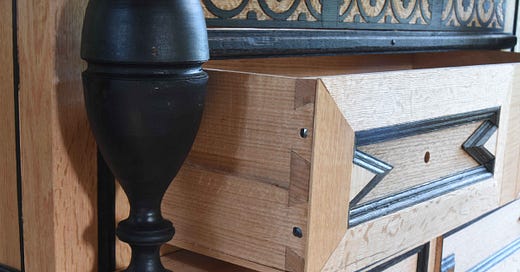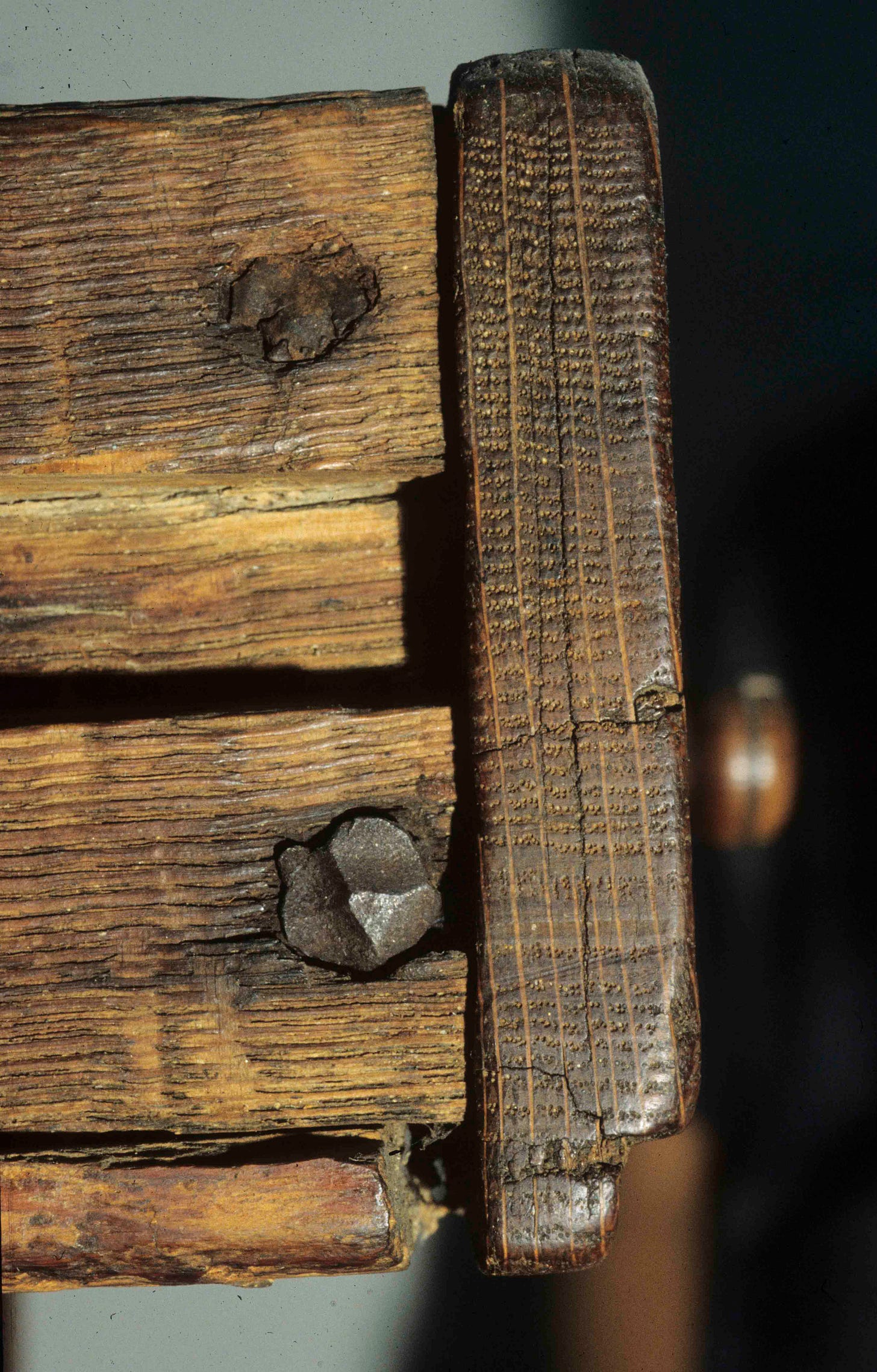I started fitting the drawer bottoms today and that got me to thinking about 17th-century New England drawers. Let’s look at them in general then the specific ones I’m making for the cupboard.
For starters, heavy oak drawers. Side-hung - meaning there’s a groove in the drawer side that engages a slat set in the interior of the cupboard/chest/chest of drawers. Most commonly the joints are rabbets fastened with nails. This photo is a drawer from a long table made in Marshfield, then part of Plymouth Colony. Jennie Alexander shot this umpteen years ago - you can’t see that the drawer front is rabbeted, but the side snugs up there & is nailed into end of the drawer front. There’s another rabbet at the bottom of the drawer front to hide the ends of the drawer bottoms. These are nailed up to the drawer sides & back & toenailed into the drawer front. All pretty standard construction.
Keep reading with a 7-day free trial
Subscribe to Follansbee's Substack to keep reading this post and get 7 days of free access to the full post archives.





